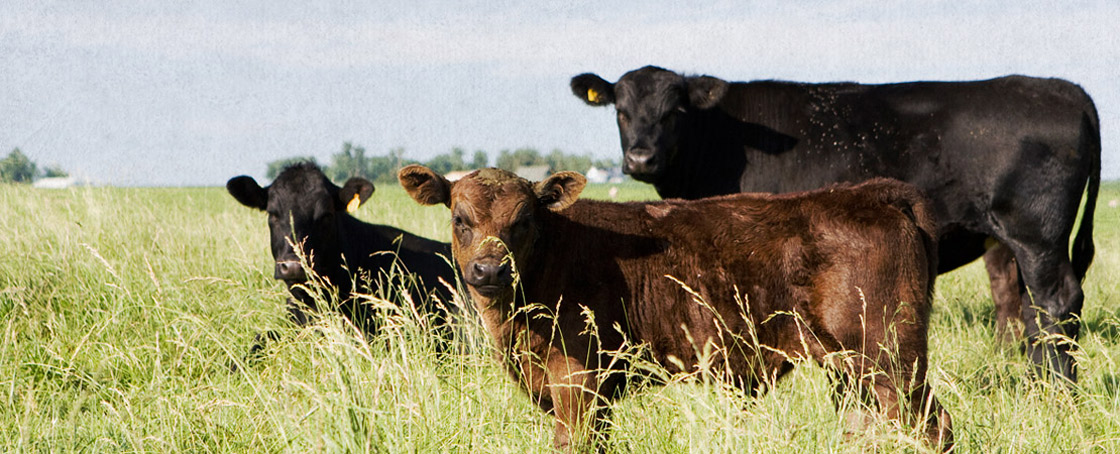Why Grass-Fed?
Our cows eat grass so you don’t have to!

Not so many years ago, a majority of the beef in the United States was produced and finished by using grass exclusively. In fact, it wasn’t until the 1950s that large feed lots and grain-fed techniques became widely popular. The grain-fed movement spread very quickly and by the 1980s, large feed lots were responsible for producing nearly 100% of this country’s beef.
The nation’s switch to grain had a strong rationale. Grain-fed techniques have neutralized many of the unpredictable variables associated with raising cattle (favorable weather, green grass, and steady pricing in the market) and significantly streamlined the nation’s beef supply chain. However, several nutritional experts now believe that this migration to grain-fed beef was not in the best interest of our nation’s long-term health. For instance, rates of heart disease and obesity in the U.S. have increased significantly during the last four decades. Many researchers believe that the timing of these two events is more than a mere coincidence.
While still a niche movement, grass-fed beef production and consumption is making a comeback. To better understand why, consider the following comparisons of grass-fed versus grain-fed beef:
Grass-Fed vs Grain-fed
- Saturated Fat: Low levels (similar to the levels found in lean chicken breasts)
- Good Fat: High in omega-3s (also commonly found in certain fish, such as salmon and tuna)
- CLA: High doses of conjugated linoleic acid, thought by many to fight cancer
- E. Coli: Reduced exposure to bacteria
- Ag Process: Ecologically friendly
- Saturated Fat: Levels are often 3-4 times higher than those found in grass-fed beef
- Good Fat: Limited omega-3 content
- CLA: Limited CLA content (because CLA comes directly from the grass)
- E. Coli: Risks remain a constant and growing concern
- Ag Process: Requires significant use of chemicals, fertilizers and gasoline
More on CLA
Research on the cancer fighter aspects of conjugated linoleic acid (CLA) is quite promising. The passage below is a direct quote from the book “Why Grassfed is Best,” by prominent author Jo Robinson:
Researchers did not get their first glimpse of the many health benefits of CLA until 1987. Although the research is in its earliest stages, CLA shows promise of reducing the risk of cancer, obesity, diabetes, and a number of immune disorders. What’s more, CLA appears to be perfectly safe. Even in very large doses, this good fat has shown no harmful effects in laboratory animals.
At this point in time, the research on CLA and cancer is the most promising. When rats are fed very small amounts of CLA—a mere 0.1 percent of their total calories—they show a significant reduction in tumor growth. At 1.5 percent of their caloric intake, tumor size is reduced by as much as 60 percent.
So, is there enough CLA in grassfed products to reduce your risk of cancer? Probably so. It has been estimated that people eating ordinary grain-fed meat and dairy products consume about 1 gram of CLA a day. Judging by animal studies, this is one-third of the amount required to reduce the risk of cancer. Switching to grassfed animal products would increase your CLA intake three to five times, which could make the all-important difference.
You can read more about Jo Robinson and her research at www.eatwild.com.